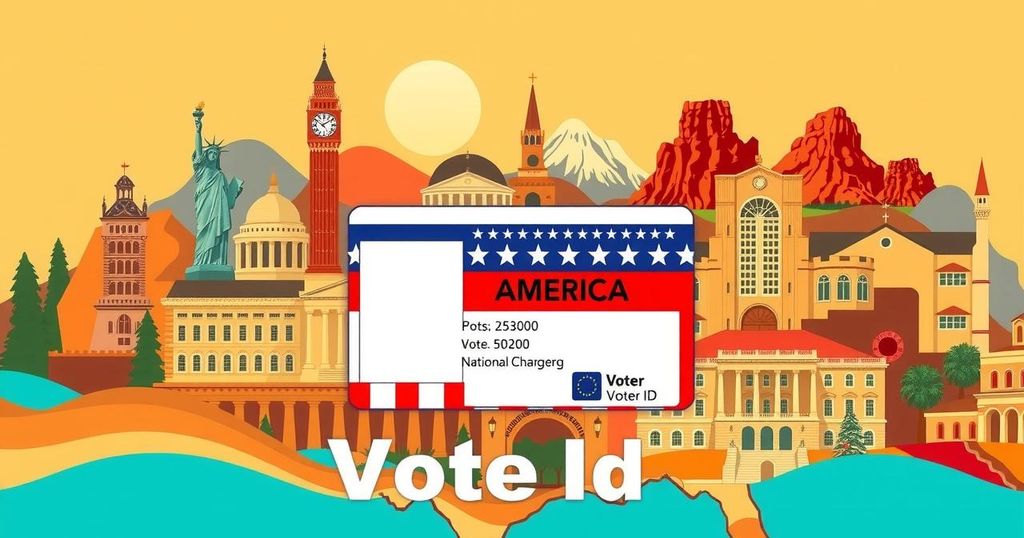Former President Trump has questioned why the U.S. cannot implement a voter ID system similar to India’s, which uses biometric data to reduce fraud. He signed an executive order mandating proof of citizenship for voter registration. However, challenges such as decentralization, legal restrictions, and potential disenfranchisement of voters complicate direct adoption of such a system in the U.S.
Former President Donald Trump has reignited the election security debate by questioning, “Why can’t America do what India did?” This stems from India’s voter ID system, which integrates biometric identification using Aadhaar to prevent electoral fraud. To enhance U.S. voting laws, Trump signed an executive order requiring proof of U.S. citizenship for federal election registration, inspired by countries like India and Brazil that utilize advanced technologies.
Trump’s inquiry emphasizes voter ID, election integrity, and civic trust, highlighting that while India’s biometric system excels in a centralized environment, the U.S. operates under a decentralized framework within which reforms can be challenging. Changes need to balance various factors, including security, accessibility, legality, and fairness, suggesting reforms must be thoughtfully constructed around the complexities of American electoral mechanics.
India’s electoral security is bolstered by the Aadhaar system initiated in 2009, providing citizens a unique 12-digit biometric ID which includes fingerprints and iris scans. The voting process involves several steps: registration requires biometric data, Aadhaar is linked to voting credentials, identity verification is carried out at polls using biometric data, and the system helps eliminate counterfeit or duplicate voter entries. This integration has actively reduced electoral fraud, particularly in populous regions.
The prospect of America replicating India’s voter ID system presents numerous challenges. First, the decentralized nature of U.S. elections means states set their own rules, leading to resistance against federal uniformity. Secondly, constitutional structures complicate federal involvement, with precedents indicating that such mandates could face legal hurdles. Third, stricter ID laws may disenfranchise groups lacking essential identification, raising civil rights concerns. Moreover, implementation of a biometric system would require adherence to stringent privacy regulations, akin to European data protections.
Financially, establishing a nationwide system in the U.S. would require immense investment, possibly in the tens of billions of dollars. Trump’s executive order emphasizes the necessity for proof of citizenship, a national verification database, and audits of voter rolls, aiming to address duplicates or ineligible entries. However, only 36 states currently enforce a form of ID requirement, with varying stringency on citizenship proof.
For America to consider an India-like voter ID approach, several prerequisites surface. This includes developing a national biometric ID system needing congressional approval, ensuring robust data privacy laws, and significant financial commitment for infrastructure and public trust initiatives. Arguments for voter ID expansion include improved election integrity and public confidence, whereas critics warn of disenfranchisement and civil liberties violations.
In summary, while Trump’s proposal to adopt India’s voter ID model presents an intriguing perspective on election security, the complexities of the U.S. electoral system present significant barriers. These include decentralization of elections, constitutional constraints, impacts on marginalized communities, privacy considerations, and financial implications. A movement towards stricter voter ID laws must carefully consider these factors to ensure both integrity and accessibility in the democratic process.
Original Source: www.upexciseportal.in





